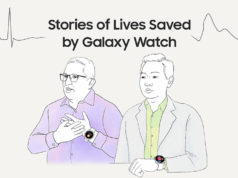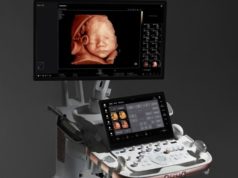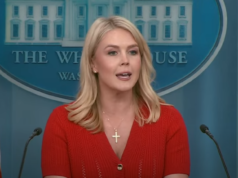
Major challenges across all of the domains addressed by MIT’s Institute for Data, Systems, and Society (IDSS) incorporate fundamentally intertwined elements of technology and policy. Researchers use available data to create models and inform key decisions, while IDSS brings together engineering, science, and social sciences to develop data-driven strategies and policies.
This work is particularly visible in MIT’s long-running Technology and Policy Program (TPP). TPP recently celebrated 40 years with a special event bringing together students, faculty, alumni, and others working at the intersection of technology and policy. A number of TPP students and faculty recently participated in the annual meeting of the Technology, Management, and Policy Graduate Consortium, June 27-28 at the Cambridge Judge Business School in the United Kingdom. Amanda Giang SM ’13, a TPP graduate and current PhD candidate in engineering systems, won the best paper award at this conference.
TPP emphasizes strength in both a technical field and in the policy process. It includes graduate-level coursework in engineering, policy, economics and law, as well as an interdisciplinary thesis focused on a technology policy issue. TPP aims to prepare students for careers in academia, industry, and government. Graduates have gone on to important roles worldwide; they include Dava Newman, former TPP director and current NASA deputy administrator who is on leave as MIT professor of aeronautics and astronautics; Philip Ng, chair of the Singapore University of Technology and Design; Tatsujiro Suzuki, vice chair of the Japan Atomic Energy Commission; Jessica Stern, terrorism expert who has worked at the U.S. National Security Council, Harvard University, and Boston University.
“TPP fulfills a significant role at MIT, and indeed at leading technological universities worldwide that have followed MIT’s leadership in creating such programs,” says Professor Richard de Neufville, founding chair of the program. “TPP deals with the whole problem, combining technological knowledge with a deep appreciation for the political, economic, and legal aspects that inescapably surround important issues.”
TPP research ranges across a variety of areas, including energy and environmental issues, financial systems, health, transportation, cybersecurity, and more. Problems in these areas require holistic approaches. Although each problem has its own complexities, the new models and methodologies developed to address them can often be applied to other challenges, as well.
“The future of research at the intersection of technology and policy will draw lessons across domains and disciplines,” says Associate Professor Noelle Selin, TPP associate director. “We ultimately need to link the knowledge gained from specific areas to get generalizable insights that are applicable across domains.”
The following examples provide a glimpse of some recent work from TPP students.
Health and economic impacts of mercury
A number of TPP students focus on environmental challenges. For example, Amanda Giang’s research aims to develop an improved, more complete model of mercury’s path from emissions to impacts, to assess potential benefits of mercury policy.
Mercury is a toxic pollutant emitted by human activities, including coal combustion and mining. Once emitted, mercury can travel globally in the atmosphere, eventually entering aquatic ecosystems and accumulating in fish. Given the human health risks of eating mercury-contaminated fish, mercury is the target of the UN Minamata Convention, a recent global environmental treaty. In examining the ways in which a specific country, like the U.S., will benefit from a global treaty, it must be considered that mercury emissions can be transported long distances, and people eat fish sourced locally and globally.
To evaluate benefits to the United States of this new global policy, Giang developed an integrated framework comprised of three parts: chemical transport modeling, exposure and health impacts modeling, and economic valuation modeling. In addition, to understand the relative benefits of global and domestic policy, Giang uses this framework to evaluate the benefits of the Mercury and Air Toxics Standard (MATS), a recent U.S. regulation that targets emissions from coal-fired power plants. Simulation results indicate that by 2050, the U.S. may benefit more than twice as much from global as compared to domestic policy. However, these results are sensitive to different uncertainties along the emissions-to-impacts path. For instance, U.S. policy leads to larger benefits for populations eating predominantly locally caught freshwater fish, highlighting the importance of domestic policy. Because this approach provides more insight into the controlling influences behind the benefits, it can better inform decisions about where and what type of policies should be implemented, as well as best practices for assessing mercury-related policies.
Integrated modeling to improve drinking water conditions
Thesis work by Himani Gupta SM ’15 addresses the issue of unsafe water in rural communities in India.The main challenges to clean water in this area — as well as other areas in the developing world — often include a lack of infrastructure, limited access to new water resources, and overdependence on groundwater resources. These issues can also be further exacerbated by a lack of effective water management policies. In the past, such problems often have been addressed by complicated models that may not actually take into account some of the issues of specific villages — and therefore may not be scalable to or effective in particular communities. This thesis suggests a simpler modeling approach by integrating the local conditions and typical hydrological processes to develop a practical tool that can be used directly by the local water authorities and village community.
To develop a prototype model, Gupta identified a case study of a village located in the Gujarat state of India, proposing a conceptual framework that integrates components such as climate, surface water, groundwater flow, domestic water demand, and pumping for irrigation through water balance approach. Based on this framework, Gupta built a mathematical model to understand the relevance of different system parameters in increasing water system reliability. Through the process of model development, scenario simulations, and discussion on policy implications, this research shows how the proposed model can further general water system understanding — and how it can be a valuable tool for planning water resources through scenario modeling, decision support, policy analysis, and infrastructure design.
Designing aircraft architectures and policies to meet fuel efficiency goals
Research of recent TPP grad Demetrios Kellari SM ’16 looks at the past and future of aircraft design. Kellari’s thesis, “Historical Analysis and Future Predictions of Aircraft Architecture and Performance,” received TPP’s 2016 Best Thesis Award. This thesis looks at how aircraft design changes might help to meet fuel efficiency goals. Aircraft architectures have changed over time, consolidating on a dominant design, in order to accommodate the tremendous growth of demand in the commercial airline industry (from 6,000 annual air passengers in the U.S. in the 1930s to more than 800 million today). Associated with this consolidation is a twofold increase in performance, driven mainly by improvements in aircraft technologies. In recent years, however, improvements in aircraft performance have decreased as aircraft have entered a period of diminishing returns in performance — yet air passenger traffic continues to grow and is expected to increase 3.5 to 4.6 percent per year according to projections by some major aircraft companies.
Kellari’s research analyzes the conditions that could break the current dominant architecture of commercial aircraft and identifies the stringency of policies that could invoke such a disruption. He identifies engine design and performance as the main driver of aircraft architecture and performance and he creates a model to quantitatively forecast the impact of four engine technology scenarios. Results indicate that for some existing airframes, performance is expected to increase by 6 to 38 percent within the next 10-14 years, depending on engine technology development. The maximum performance for the dominant architecture is expected to occur in the next 20-30 years. At this point he suggests that a break in architecture may be required to continue the trend of improving aircraft performance to meet the demands of a future society. Two policy scenarios (based on existing fuel-efficiency targets) are shown to incentivize technology development, reduce the uncertainty in performance and architecture predictions, and reduce the time to an expected break in architecture.
Computational methodologies to understand taxable income in partnerships
Other TPP research proposes new methods to understand complex financial and organizational issues. In his thesis, “Computer-aided tax avoidance policy analysis,” Jacob Rosen SM ’15 analyzed the flow of taxable income in large partnerships. (This was co-winner of the 2015 Best Thesis Award, along with “Characterizing shale gas and tight oil drilling and production performance variability” by Justin Montgomery.) This challenge has emerged as partnerships have dramatically increased in size and complexity over the last several years, resulting in an estimated $91 billion in underreported income. The combination of the increase in the number of partnerships and the highly complicated nature of U.S. partnership taxation law creates a need for new evaluation methods.
Rosen presents a method that forms the basis for a software prototype that would clarify many of the complicated basis adjustment issues associated…







